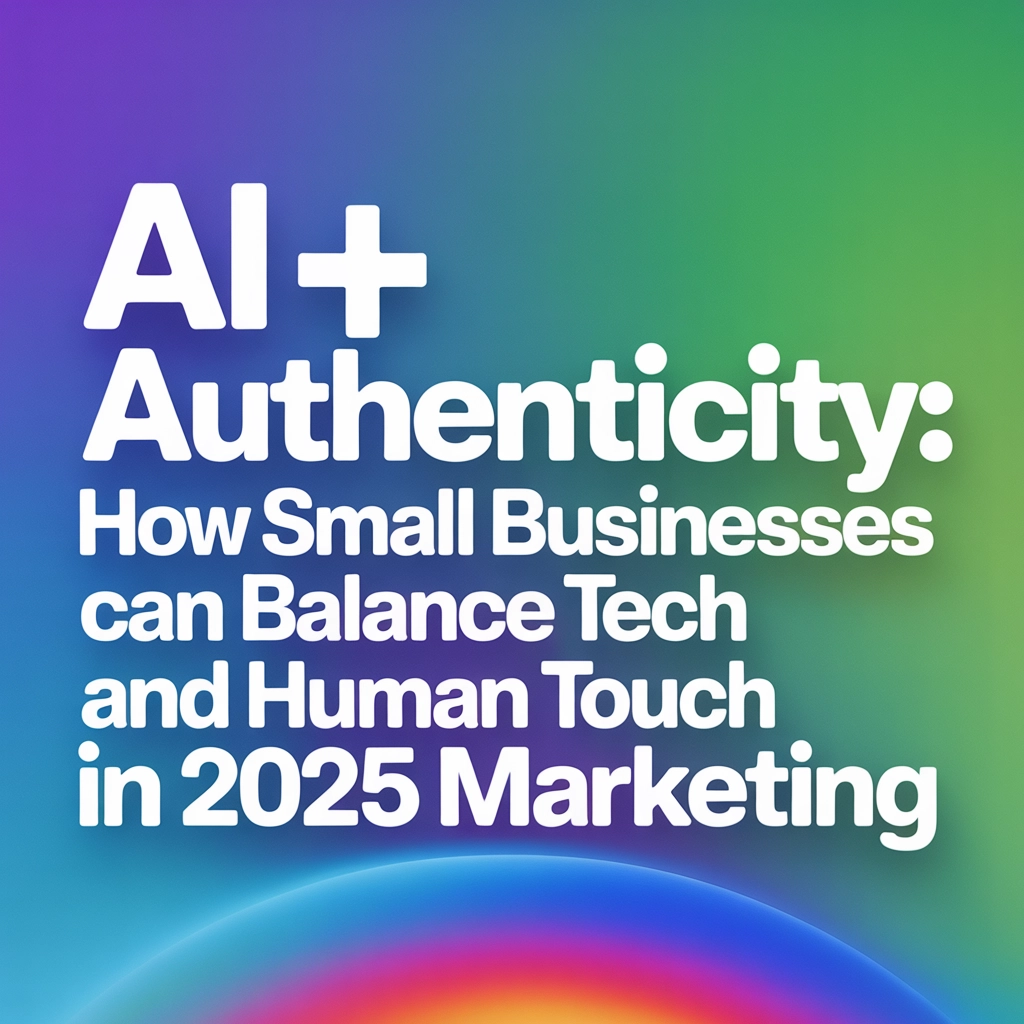2025 is the year where “keeping it real” in marketing takes on a whole new meaning. The rise of AI tools has changed the game for small businesses—making things more efficient than ever, but also bringing a big challenge: Standing out and staying authentic when everyone has access to similar technology.
Let’s get into how you can blend AI power with your human spark, and why that combo is pure marketing magic for small businesses.
The Real Dilemma: Too Much Robot, Not Enough Real
AI can write your blogs, answer your DMs, and whip up ad copy in seconds. It’s awesome…until all your messaging starts feeling just like everyone else's. Customers are smart—they know when they’re talking to a machine or reading something churned out by an algorithm.
At the same time, you’re busy. Most small business owners wear a million hats, and that’s not going to change. AI is the super tool that keeps you moving, but if you lose your personal touch, your customers start drifting.
Here’s the kicker: The brands crushing it in 2025 are mixing automation with authenticity. They’re keeping the efficiency but cranking up the human connection.
Why Authenticity Is Your Secret Weapon
We always say, “People connect with people, not brands—or bots.” Customers want to feel like there’s a real person behind the business. That’s how trust is built, and how loyalty (and referrals) happen.
In a world where AI can mimic anyone, what’s truly unbeatable is the stuff that can’t be copied: your story, your voice, your quirks, your empathy. That’s the edge no technology can match.
How to Actually Balance AI and Authenticity (Without Losing Your Mind)
1. Use AI as Your Power-Up, Not Your Persona
AI should make your job easier, not erase you from the process. Try this:
- First Drafts, Not Final Drafts: Use AI for outlines, summaries, or social captions, but always review, tweak, and add your personality before hitting publish.
- Keep It Human: Add personal stories or references only you could include. That’s what stands out.

2. Master the Art of Hyper-Personalization
It’s not enough for emails to say “Hey, [First Name]!” We’re talking true personalization:
- Let AI Find the Patterns: Let AI notice buying behaviors, engagement trends, or preferences.
- You Make the Decision: Use that insight to reach out with a real, thoughtful touch—maybe a quick video, handwritten note, or tailored recommendation.
Pro tip: When in doubt, ask yourself how you’d want to be treated as a customer. Then use AI to help deliver just that, faster.
3. Don’t Skip The Human Edit
AI isn’t perfect—sometimes it misses the mark or gets tone-deaf. Before anything goes live:
- Ask: Does this sound like us?
- Does this respond to real needs and feelings?
- Could our customer tell this was written by a robot?
If the answer’s “maybe,” give it one more pass with heart.
4. Automate the Boring Stuff, Show Up for the Big Stuff
Let’s be real—you don’t need to manually schedule every Instagram post or answer every FAQ. Automate routine customer service or monthly newsletters. But for big moments—happy customer wins, tough feedback, or anything emotional—be present yourself.
Create a simple system:
| Task | Use AI | Add Human Touch |
|---|---|---|
| Blog outlines | Yes | Always |
| FAQs | Yes | As needed |
| Personalized offers | Yes (segments/templates) | Personal follow-ups |
| Customer complaints | No (except ticket routing) | Always |
| Social replies | Yes (basics/DM filtering) | For real conversations |

5. Track Both Speed and Soul
Efficiency is awesome, but what you measure is what you get more of. Don’t just track how many posts AI helped you create—instead, balance the stats:
- Time saved with AI
- Engagement rates (comments, shares, real convos)
- Customer sentiment (do they FEEL heard?)
- Repeat business and referrals
If you start to see engagement or feedback feel less “warm,” it might be time to dial up the human touch.
6. Keep Learning and Adapting
2025’s AI feels light-years ahead of what we had just a year or two back. Expect platforms and best practices to keep shifting. So:
- Stay curious: Try new AI tools, but evaluate whether they help or hurt your brand’s unique vibe.
- Get feedback: Ask customers what they notice (and appreciate!) about your communication.
- Tweak often: Don’t be afraid to swap out what isn’t working—your balance will change over time.
Some Smart AI Tools (and How to Use Them Without Losing Yourself)
– ChatGPT for Content Brainstorming: Perfect for blog outlines, ideas, and rough drafts. Just always add your own voice when editing.
– Jasper for Social Posts and Ads: Let it generate variations; pick the one that fits your brand best, and give it a final tweak.
– HubSpot AI for Email Automation: Use it for segmenting, not for writing your whole message—personalize at the end.
– Canva Magic Write for Design Ideas: Great for visuals, but swap in your real customer or product photos for authenticity.

What Losing The Balance Looks Like (And How to Fix It)
Ever read a company blog or social post and thought, “Wow, that could be any business?” That’s the risk with an overreliance on AI.
If you notice:
- Less engagement
- Generic responses
- Customers asking to “speak to a real person”
- Your own voice fading from your marketing
…it’s time for a gut check. Pull back on automation, jump back into the conversations yourself, and share something real—even a quick behind-the-scenes story or an honest response to a customer milestone can reignite that connection.
Blending: The Real 2025 Marketing Superpower
You don’t need to choose between robots and real people. The magic is in the blend. Small businesses get to move fast, experiment, and show off personality in a way big brands can’t.
Keep your systems smart, but remember: your customers want to feel like they’re connecting with someone real. That’s where the trust (and the sales) come from.
Ready to revamp your own blend of AI + authenticity? Explore more resources and personalized marketing support at LaDonna Raeh Consulting.




